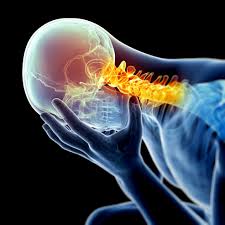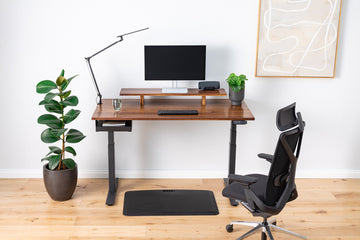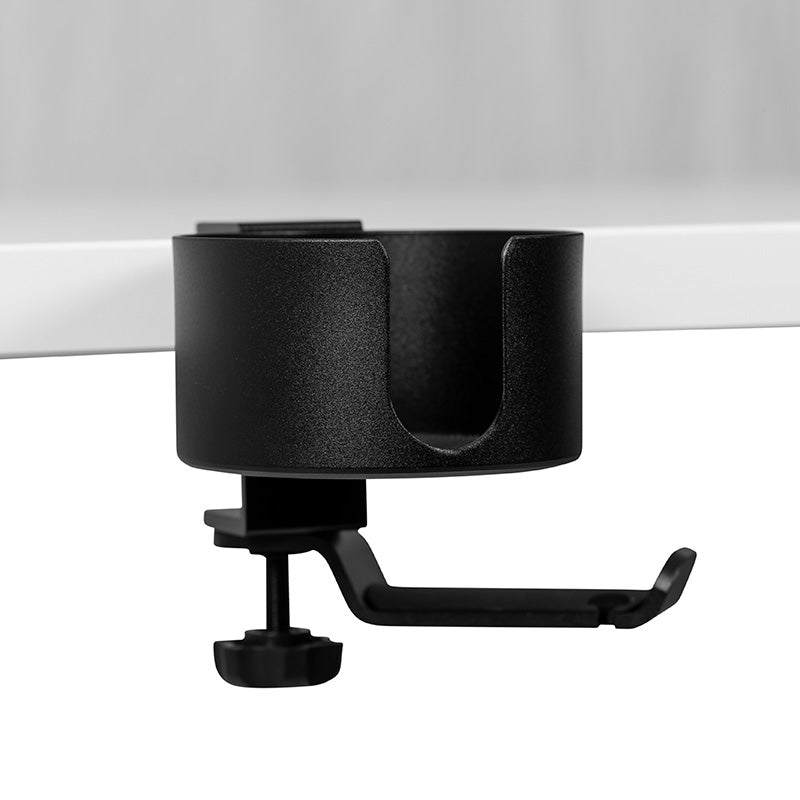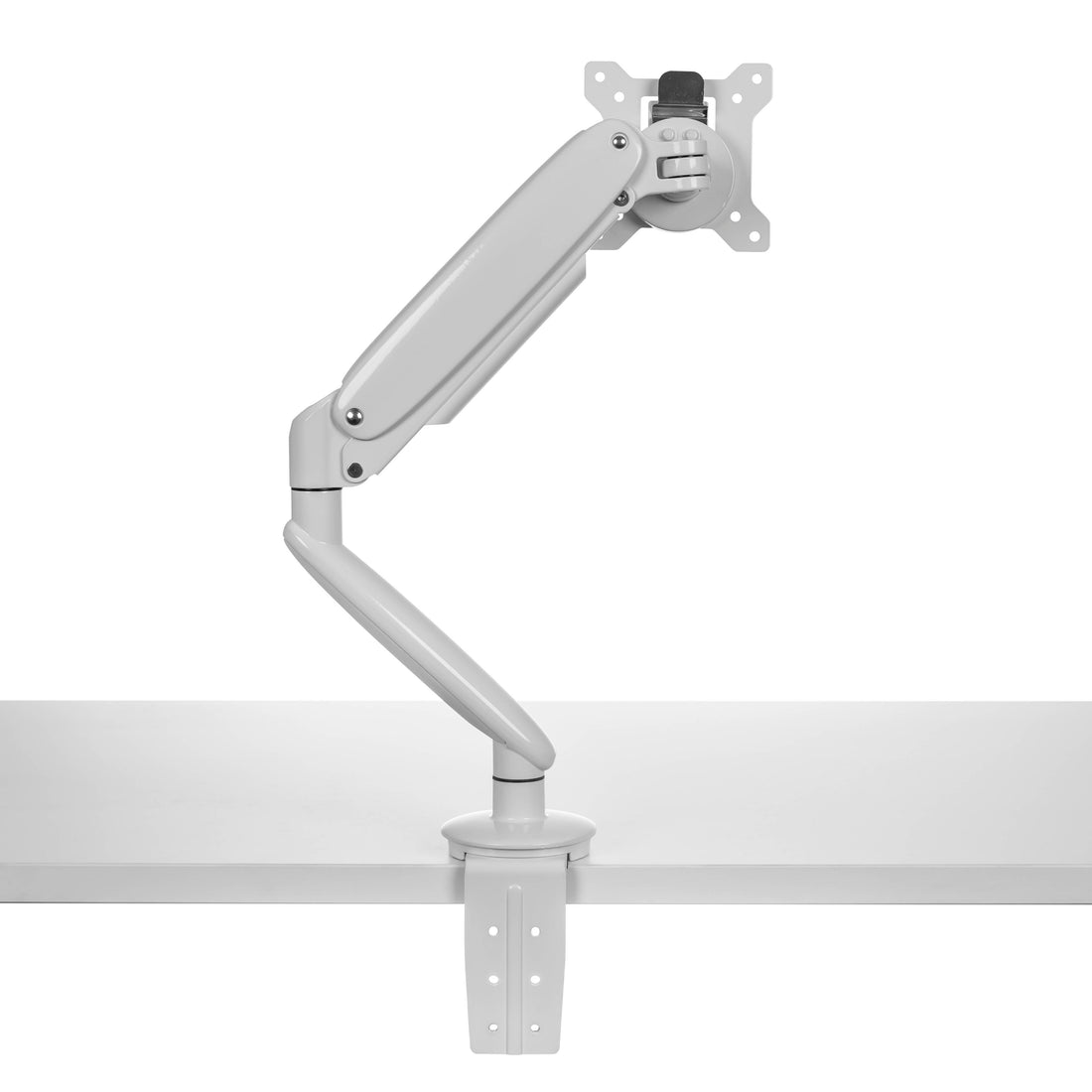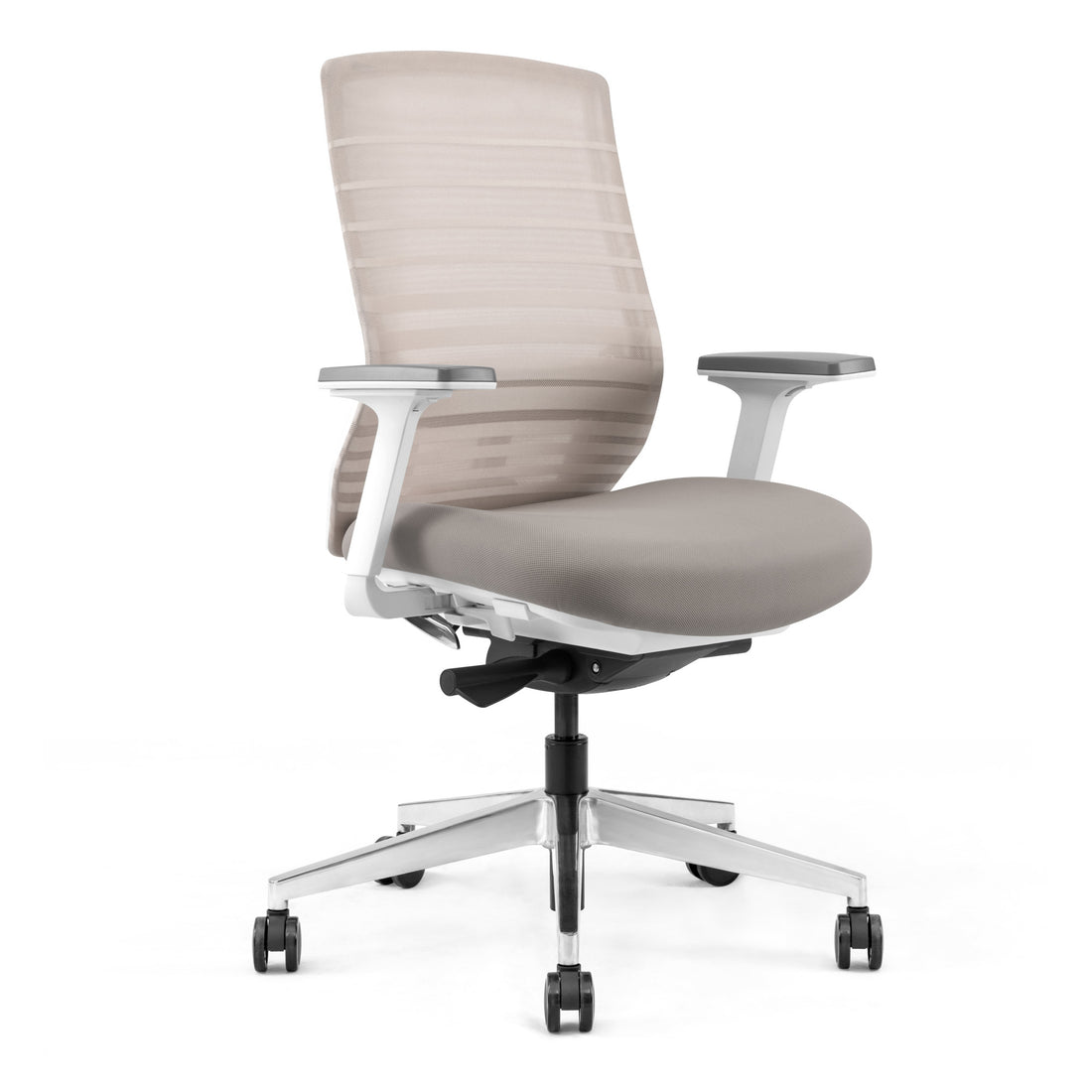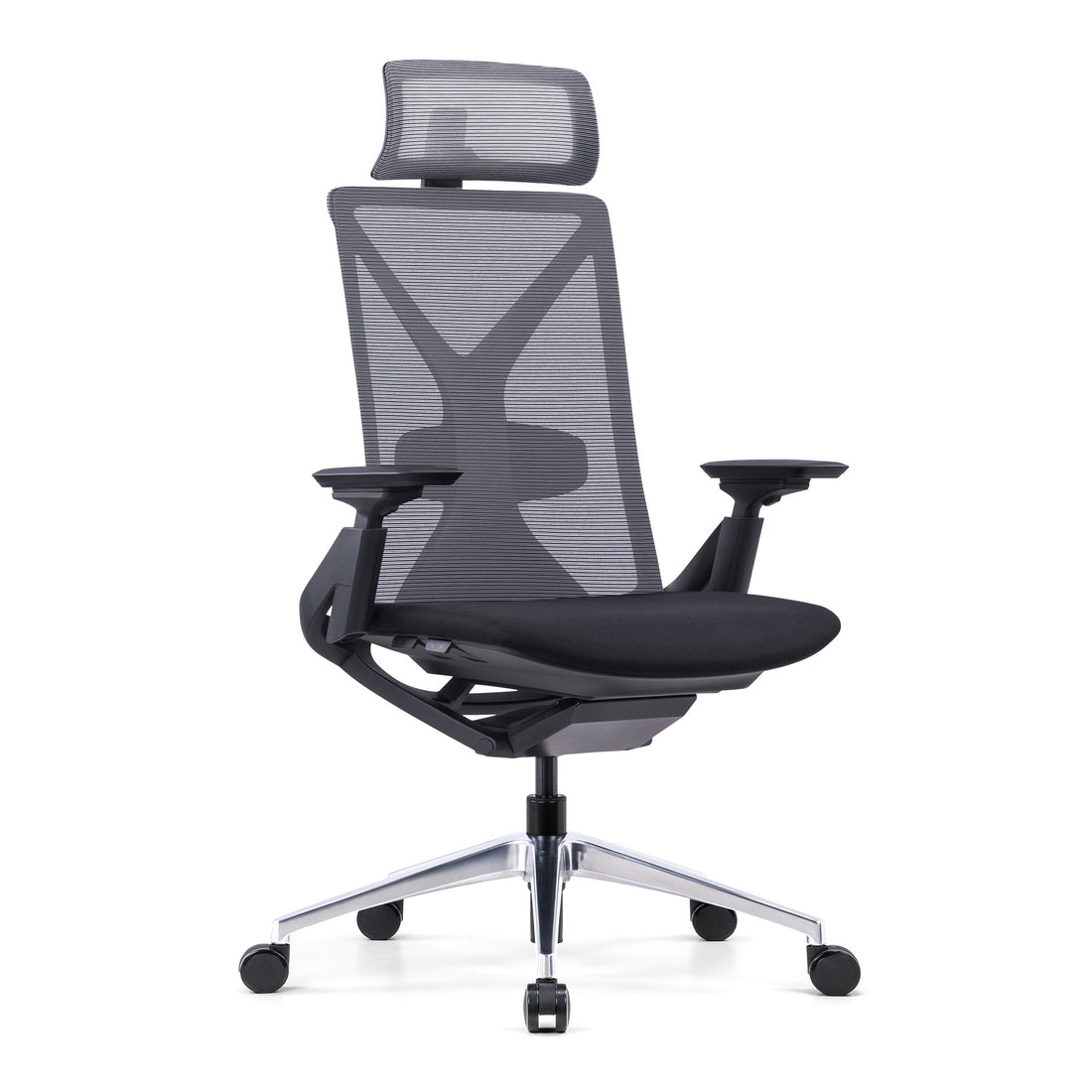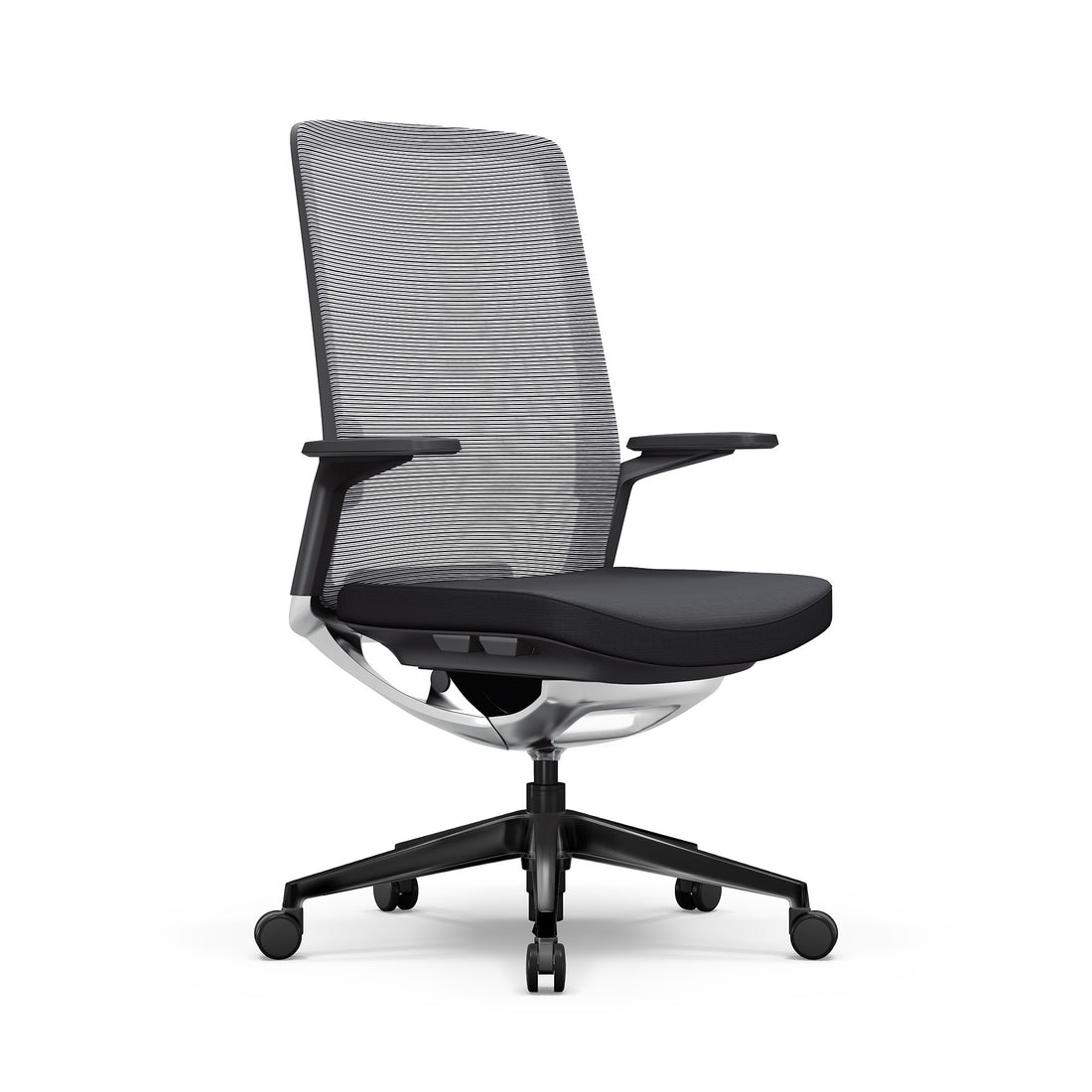Headaches and neck pain are common complaints of office workers. There are a number of factors that may contribute to such symptoms, such as posture, eyesight, water intake, and fatigue. However, since I've got a physiotherapy background, this article will focus on posture and the musculoskeletal causes of headache and neck pain, and how a standing desk may be able to assist.
From a musculoskeletal stand-point, the majority of headaches seen in office workers are called cervico-genic headaches. This means that the headache is caused by an irritation to the cervical spine (i.e. the neck). This irritation refers pain to the head (as well as usually being felt as neck pain as well), which is felt as a headache.
The common referral points for a cervico-genic headache are the base of the skull, behind the eyes, and around the forehead and temples.
So, why does this occur?
This referral occurs due to the stresses placed upon the cervical spine. When you're sitting, it's very common to adopt what is known as a "forward head posture", or "poking chin posture" (shown below). This posture compresses the upper cervical spine more than usual, which in turn irritates the surrounding structures. What exactly is being irritated may vary, but may include the intervertebral joint, ligaments, or nerve roots. Alternatively, the surrounding muscles may just go into spasm due to the discomfort, which may also refer pain to the head as a headache.

Poking Chin Posture
The connection between poking chin posture and sitting usually comes to fruition after a while spent sitting. It is easy enough to sit with "good posture" for a little while. However, if you're sitting for hours on end, it is all too easy to fall into a poking chin posture, as the body fatigues and you forget about your posture. When this happens, irritation to the structures in the neck occurs, and cervicogenic headache is often the result.
How can a standing desk help this?
Firstly, I'm not a typical retailer, so I'm not going to shove standing desks down your throat as a cure-all. With that said, there is little doubt that a standing desk can help to reduce both the frequency and severity of cervicogenic headaches. Have a look at our PRO Series standing desk products.
As mentioned above, a key cause of cervicogenic headache is a poking chin posture. The main cause of a poking chin posture is prolonged sitting and fatigue. As you sit for longer and longer, the body is less likely to be able to sit upright. Thus, you fall into a poking chin posture. Have you ever found yourself slouching in your chair? Well you would also have been sitting with a poking chin posture.
Also, how often have you found yourself consciously poking your head forward to take a closer look at the computer screen? This is the same posture as a fatigue related poking chin posture.
Unfortunately, it's a downward spiral as well. Once you have experienced the first bout of discomfort or pain from sitting with a poking chin posture, it is easier for it to happen again. This is because the discomfort and pain may result in muscle inhibition, whereby the supporting muscles of the neck are "switched off". If this happens, the cervical spine has less stability and is even more susceptible to irritation, leading to increased cervicogenic headache symptoms.
Having a standing desk provides you with the ability to switch position regularly throughout the day. This on itself is of great importance as it reduces the monotonous accumulation of muscular strain/stress to the same areas (which occurs when you sit all day), which reduces the likelihood of muscular fatigue and pain.
Here are some more benefits of having a standing desk at the stand-by:
1) You're less likely to fall into a poking chin posture out of fatigue;
2) When you do happen to need to poke your chin forwards to look at the computer more closely, you can move your entire body forward, as opposed to just poking the head forward in sitting;
3) You can't slouch in standing (well, you can, but it would look and feel ridiculous so you're not likely to do it!);
4) If you do happen to experience some pain or discomfort, you have the ability to quickly switch position, helping to prevent the problem from exacerbating.

